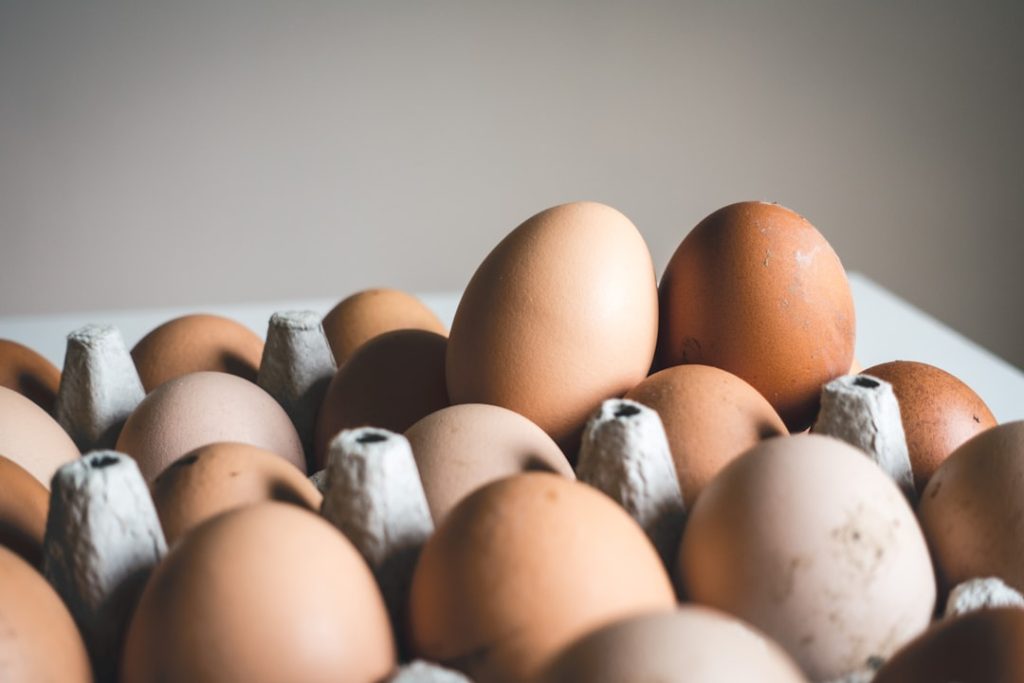Breeding common quails can be a rewarding and profitable venture for many poultry enthusiasts. Common quails, also known as Coturnix coturnix, are popular for their small size, fast growth, and delicious meat and eggs. They are also relatively easy to care for and can thrive in a variety of environments. Breeding quails can be a great way to produce your own meat and eggs, or even to start a small business selling quail products. Before embarking on a quail breeding venture, it’s important to understand the basics of quail breeding, including selecting the right quails for breeding, creating the ideal breeding environment, understanding quail breeding behavior, managing breeding and incubation, caring for quail chicks, and tips for successful quail breeding.
Table of Contents
Key Takeaways
- Breeding common quails can be a rewarding and profitable venture for poultry enthusiasts.
- Select quails with good genetic traits and health for breeding to ensure the production of strong and healthy chicks.
- Provide a suitable breeding environment for quails with proper lighting, temperature, and nesting areas to encourage breeding behavior.
- Understanding quail breeding behavior, such as courtship displays and egg laying patterns, is essential for successful breeding.
- Proper management of quail breeding and incubation, including regular monitoring and adjustment of conditions, is crucial for hatching healthy chicks.
Selecting the Right Quails for Breeding
When it comes to breeding common quails, selecting the right birds is crucial for success. It’s important to choose healthy, disease-free birds with good genetics to ensure the best possible offspring. Look for birds that are active, alert, and have bright eyes and clean feathers. Avoid birds that appear sick or lethargic, as they may not be suitable for breeding. Additionally, consider the age and weight of the birds – mature quails that are at least 6-8 weeks old and of a healthy weight are ideal for breeding. When selecting birds for breeding, it’s also important to consider their lineage and genetic diversity. Avoid inbreeding by introducing new bloodlines into your breeding stock periodically to maintain genetic diversity and prevent health issues in the offspring. By carefully selecting the right quails for breeding, you can set the stage for a successful and productive breeding program.
Creating the Ideal Breeding Environment for Quails
Creating the ideal breeding environment is essential for the health and productivity of your quails. Quails are relatively hardy birds that can adapt to a variety of environments, but there are certain key elements that are necessary for successful breeding. First and foremost, provide your quails with a clean and spacious living area that allows them to move around freely. A well-ventilated coop or cage with proper lighting and temperature control is essential for creating a comfortable environment for breeding. Additionally, provide your quails with nesting boxes or areas where they can lay their eggs in privacy. The nesting boxes should be filled with clean bedding material such as straw or wood shavings to provide a comfortable and hygienic environment for egg laying. It’s also important to provide a balanced diet for your breeding quails, including high-quality quail feed supplemented with fresh greens and clean water. By creating the ideal breeding environment for your quails, you can ensure their health and well-being, which is essential for successful breeding.
Understanding Quail Breeding Behavior
Understanding quail breeding behavior is crucial for successful breeding and egg production. Quails are known for their prolific egg-laying abilities, with females capable of laying up to 300 eggs per year under the right conditions. In order to encourage successful breeding and egg production, it’s important to understand the natural breeding behavior of quails. Male quails, also known as cocks, will often perform a courtship display to attract females, which may include vocalizations, puffing up their feathers, and chasing or pecking at the female. Once a pair has formed, the female will lay her eggs in a secluded nesting area, typically laying one egg per day until she has completed her clutch. It’s important to provide your quails with a quiet and stress-free environment during the breeding season to encourage natural mating behavior and egg production. By understanding and accommodating the natural breeding behavior of quails, you can maximize their reproductive potential and ensure a successful breeding program.
Managing Quail Breeding and Incubation
Managing quail breeding and incubation is a critical aspect of successful quail breeding. Once your quails have mated and laid their eggs, it’s important to carefully manage the incubation process to ensure the best possible hatch rates. Quail eggs typically have an incubation period of 17-18 days, during which time they require consistent temperature and humidity levels to develop properly. Use a reliable incubator with accurate temperature and humidity controls to ensure the best possible hatch rates. It’s important to regularly monitor the temperature and humidity levels in the incubator and make adjustments as needed to maintain optimal conditions for egg development. Additionally, handle the eggs with care during the incubation process to prevent damage or contamination, and turn the eggs regularly to promote even development. Once the eggs have hatched, provide the chicks with a warm and safe brooding area equipped with heat lamps and clean bedding material. By carefully managing quail breeding and incubation, you can maximize hatch rates and ensure the health and vitality of your quail chicks.
Caring for Quail Chicks

Caring for quail chicks requires attention to detail and proper husbandry practices to ensure their health and well-being. Quail chicks are delicate and vulnerable in their early days, so it’s important to provide them with a warm and safe brooding area equipped with heat lamps or heating pads to maintain optimal temperature levels. Additionally, provide the chicks with clean bedding material such as paper towels or wood shavings to create a hygienic environment. It’s important to closely monitor the chicks for signs of illness or distress, such as lethargy, huddling together, or abnormal vocalizations, and take prompt action if any issues arise. Provide the chicks with a high-quality starter feed formulated specifically for young quails, as well as access to clean water at all times. As the chicks grow, gradually introduce them to larger living quarters equipped with proper lighting, ventilation, and space to move around freely. By providing attentive care and proper nutrition to your quail chicks, you can ensure their healthy growth and development.
Tips for Successful Quail Breeding
Successfully breeding common quails requires attention to detail, proper management practices, and a thorough understanding of quail husbandry. To maximize your chances of success in quail breeding, consider the following tips:
1. Maintain a healthy breeding stock: Select healthy birds with good genetics for breeding to ensure the best possible offspring.
2. Provide a comfortable environment: Create a clean, spacious living area with proper lighting, ventilation, temperature control, and nesting boxes for your breeding quails.
3. Understand natural breeding behavior: Familiarize yourself with the courtship displays and egg-laying habits of quails to encourage successful mating and egg production.
4. Manage incubation carefully: Use a reliable incubator with accurate temperature and humidity controls to maximize hatch rates during incubation.
5. Care for quail chicks attentively: Provide warm brooding areas, proper nutrition, and attentive care to ensure the health and vitality of your quail chicks.
6. Monitor health and behavior: Regularly observe your quails for signs of illness or distress and take prompt action if any issues arise.
By following these tips and implementing best practices in quail husbandry, you can increase your chances of success in breeding common quails and enjoy the rewards of a thriving quail breeding program.
If you’re interested in breeding common quails, you might also want to explore the topic of duck mating season. Understanding the mating behaviors of ducks can provide valuable insights into the breeding patterns of other poultry species. Check out this informative article on duck mating season to gain a broader perspective on poultry breeding practices.
FAQs
What are common quails?
Common quails, also known as Coturnix coturnix, are small game birds that are native to Europe, Asia, and Africa. They are known for their distinctive call and are popular for their meat and eggs.
What is the breeding process for common quails?
Breeding common quails involves providing a suitable environment for mating, such as a spacious and well-ventilated enclosure with nesting areas. The male quails will court the females with their distinctive calls and perform a mating dance. Once the eggs are laid, they are incubated for about 17-18 days before hatching.
What do common quails eat?
Common quails are omnivorous and eat a diet of seeds, grains, insects, and small invertebrates. In captivity, they can be fed a commercial game bird feed supplemented with fresh greens and protein sources.
What are the ideal conditions for breeding common quails?
Ideal conditions for breeding common quails include a quiet and stress-free environment, proper nutrition, and a suitable nesting area. The temperature and humidity levels should also be carefully monitored to ensure successful breeding and hatching of the eggs.
What are some common challenges in breeding common quails?
Common challenges in breeding common quails include maintaining the right balance of male to female ratio, preventing aggression among the birds, and ensuring proper incubation and hatching of the eggs. Additionally, providing a balanced diet and preventing diseases are also important factors to consider.
Meet Walter, the feathered-friend fanatic of Florida! Nestled in the sunshine state, Walter struts through life with his feathered companions, clucking his way to happiness. With a coop that’s fancier than a five-star hotel, he’s the Don Juan of the chicken world. When he’s not teaching his hens to do the cha-cha, you’ll find him in a heated debate with his prized rooster, Sir Clucks-a-Lot. Walter’s poultry passion is no yolk; he’s the sunny-side-up guy you never knew you needed in your flock of friends!







